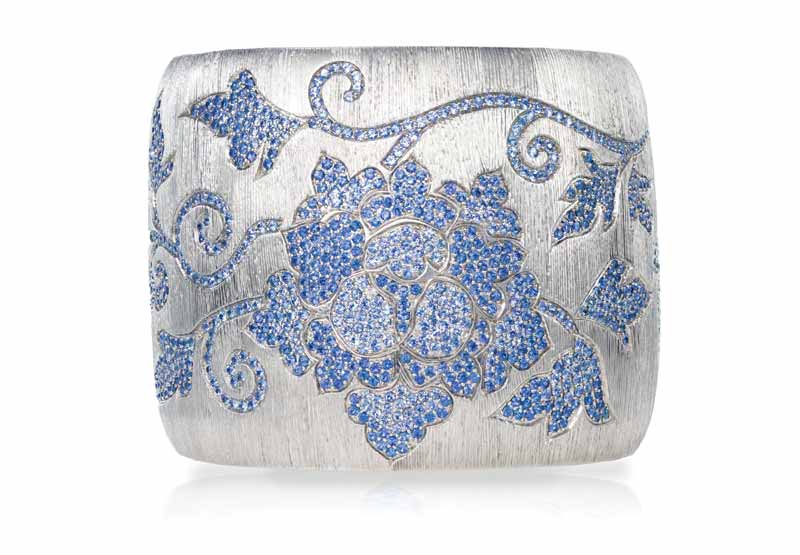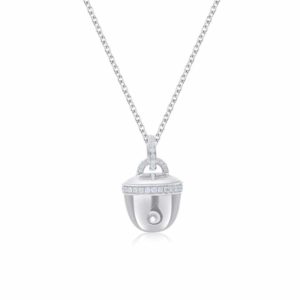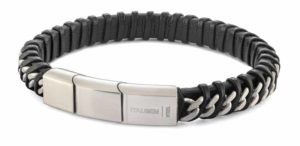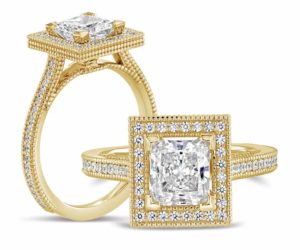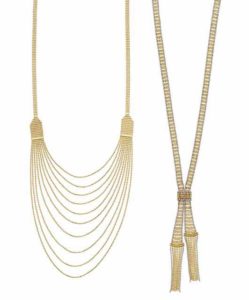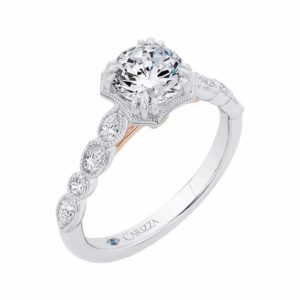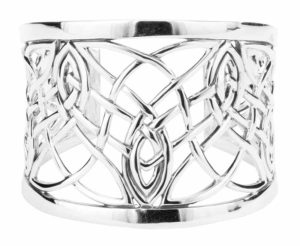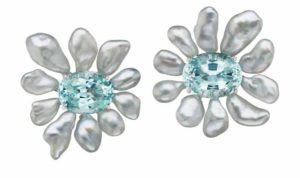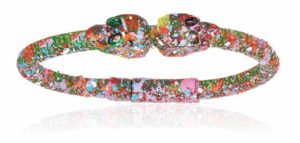Coming home again: The hottest trends and talk from JCK Las Vegas 2019
by Samantha Ashenhurst | August 13, 2019 9:55 am
By Samantha Ashenhurst
 [1]
[1]
For many, JCK Las Vegas is the industry’s premier event and a vital stop on the journey toward the holiday season. This year’s show saw more than 2200 exhibiting companies and 30,000 industry professionals (including more than 13,000 vetted buyers), representing nearly 100 countries from around the globe.
Held May 31 to June 3, the 2019 edition of the show also marked JCK’s triumphant return to the freshly renovated Sands Expo Convention Center & the Venetian, which offered more than 111,000 m2 (1.2 million sf) of exhibition space.
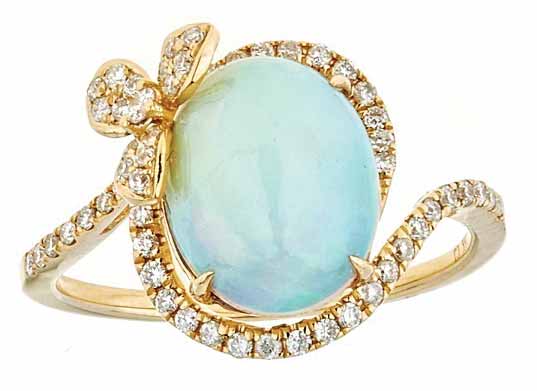 [2]
[2]“The new location, show enhancements, and updated technology drove positive energy and increased business connections,” says Sarin Bachmann, event vice-president of JCK and Luxury. “The park-themed décor, jewellery-focused ‘Instagrammable’ moments, exciting evening events, and a daytime DJ all added to the positive vibe.”
For many, this year’s show felt like a homecoming.
“There was a lot of anticipation leading up to the show this year because it was moving back to the Venetian,” says Freydi Neuwirth Traurig of Gravure Commitment/Atlantic Engraving. “On day one of Luxury, you could feel the excitement and electricity in the air.”
“The show floor was busy and people seemed enthusiastic, focused and happy to be there,” she adds. “I loved being at this more central part of the strip. Putting JCK back in its ‘home’ was great.”
Maren Rosen, vice-president of merchandising for Stuller, agrees, adding the positive vibes at the show point to an optimistic future for the industry.
“The show is fantastic,” she says. “The change of venue, the energy level, how business seems in the industry… all of this is an indication of the good things to come.”
Reimagining customer-client relationships
Determining best practices for marrying the personal experience achieved through brick-and-mortar stores and the convenience offered via online shopping was certainly a hot conversation on the floor.
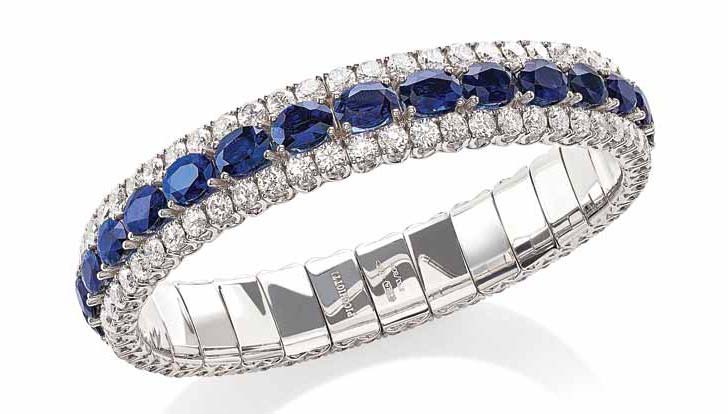 [3]
[3]JCK hosted more than 70 events this year, from networking to education. This includes the ‘JCK Talks’ series, which introduced a sold-out half-day social media boot camp, directed at retailers and small business owners looking to move their brands online.
“Selling online versus in-store seems to be a hot topic,” says Naomi Traimer of Ontario-based MeditationRings, “As are strategies for how to promote your brand or retail store on social media platforms, and what an integral part of business this has become.”
Traimer notes this shift to a mandatory online presence also affected how attendees shopped and browsed at this year’s shows.
“We had retailers shooting live footage for their clients back home to show them what brands they were picking up,” she says. “This is something you never would have seen a few years back.”
To grow or not to grow
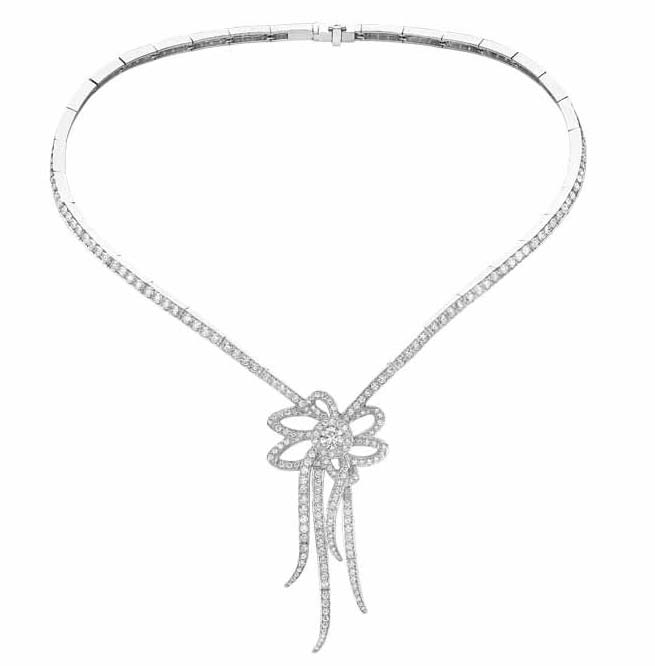 [4]
[4]Not surprisingly, synthetic diamonds continued to be a hot topic of conversation for attendees, with many unsure of what the future holds for these stones.
“There’s still a lot of chatter about lab-grown diamonds,” says JB columnist Todd Wasylyshyn of Keith Jack Jewellery. “Not every jeweller has taken a firm stand on them yet, so there’s still much discussion.”
This pressure to take a stance on the issue was echoed by Darren Dubrovsky, president of Montréal-based Empress Jewellery.
“Everyone had an opinion—or they were looking for your thoughts,” he says.
For those specializing in synthetics, the attitude was largely warm, with many retailers curious about how these stones can be introduced alongside mined diamonds to boost profits and satisfy customers’ needs.
“It’s been pretty remarkable in terms of reception,” says Amish Shah, president of lab-grown diamond company ALTR. “We’ve had a number of retailers come by the booth and say, ‘We stopped by this time last year but we weren’t ready for it, and now our customers are demanding lab-grown options.’”
“It’s interesting to see that shift,” he adds. “Even in the press, we’ve seen an increase in coverage. Manmade stones are becoming much more mainstream, which is exciting.”
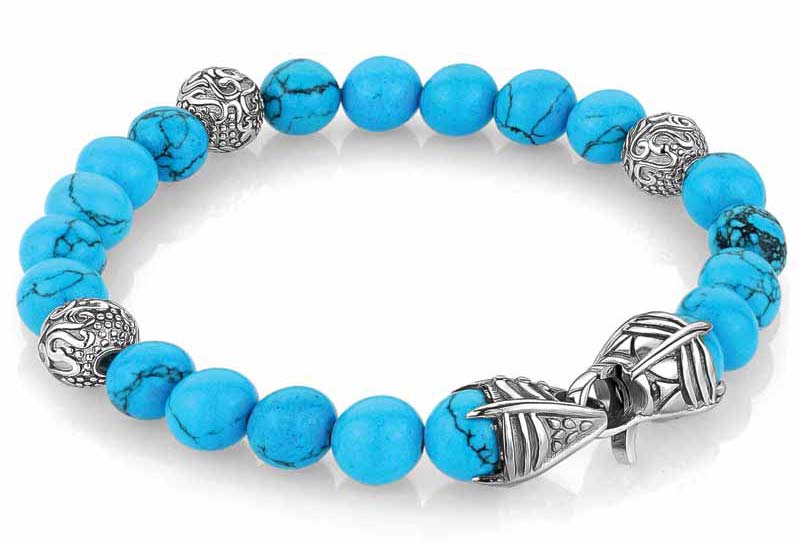 [5]
[5]Renée Newman, author of The Diamond Handbook, agrees there is a place for synthetic diamonds in the industry, but says the use of them largely depends on the buyer’s needs.
“If you’re a consumer looking for a large stone at a modest price point, synthetics are an option,” she says. “If you want a diamond you can pass on for generations that will maintain—or possibly increase—in value, then you’d want a natural diamond.”
In regards to transparency, Newman also emphasizes the need to use clear language to avoid confusion with consumers and stresses the need for complete disclosure.
“Consumers should know in advance that, historically, manmade rubies, sapphires, emeralds, and diamonds, decrease in value after they’ve been introduced because they’re so available and no longer rare. But, as long as everything is disclosed, synthetics are fine.”
Transparency is key
This notion of disclosure was another sentiment heard echoed through the halls of the Sands. Everyone seemed in agreement: now more than ever, consumers want to know the history and origin of the stones they purchase.
“The mindset of buyers—both within the industry and buying from the industry—is changing, and consumers increasingly want to know where their stones originated,” says Samantha Larson, director of gemstones with Stuller. “Origin stories are holding people throughout the supply chain accountable for good people practices, good facility practices (in cutting houses), good business practices, and responsible earth practices.”
The global effect of the diamond industry was explored by event’s keynote speaker, President Mokgweetsi Eric Keabetswe Masisi of the Republic of Botswana. The diamond industry, he said, has transformed his nation’s economy, with proceeds from the country’s partnership with De Beers being invested into infrastructure, schools, roads, and hospitals.
“Knowing the origin of a stone allows us to make greater relationships with both sides of the business,” says Larson. “We, as an industry, are opening the eyes of our clients to places around the world, giving them a look into a different way of life with centuries’ old techniques passed down through generations and even spotlighting indigenous people, plants, and animals now benefitting from a larger global platform.”
Shopping with a plan
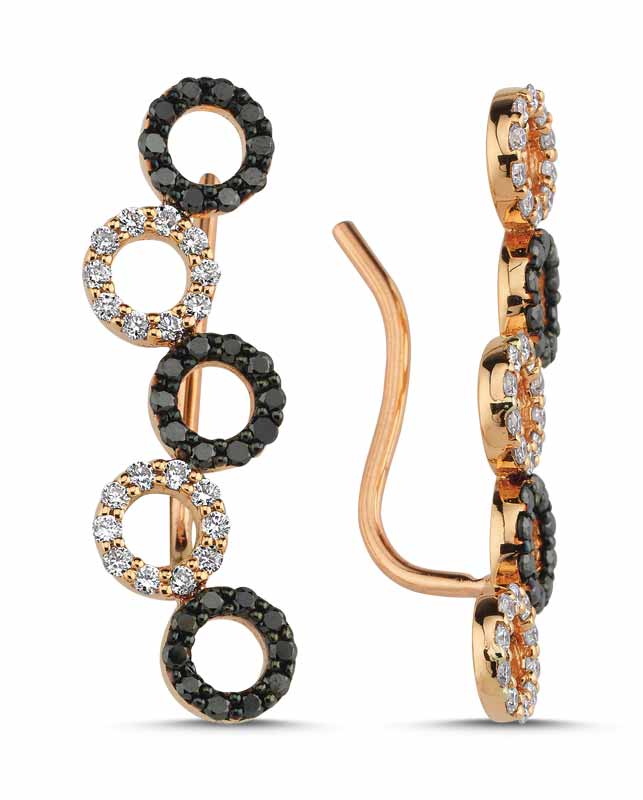 [12]
[12]When it came down to buying, many exhibitors noted this year’s shoppers were driven, focused, and practical.
“Going into the show, we knew both Canadian and U.S. retailer participation would be off in a noticeable way,” says Dubrovsky. “Our pre-show calls to our Canadian retailers showed a good 20 per cent decrease versus the year prior. That said, those that would be attending would be serious participants looking to accomplish specific goals. The ‘looky loos’ were staying away.”
“Buyers were buying for specific needs only—and those needs were retailer specific,” he adds. “No one was spending foolishly. The dollars had to address a true need and were pre-planned.”
Wasylyshyn notes an increasing number of exhibitors made allowances to increase the profits turned on the show floor.
“Designer Lilian Jensen from Customgold and Creative Goldsmiths told me many of their vendors had reduced or eliminated minimum purchases, signalling a subtle shift toward a buyer’s market,” he says.
Brenda Benzekry of Montréal-based Italgem Steel agrees, adding shoppers at this year’s shows tended to gravitate toward exclusive, luxurious items within conservative price points.
“Buyers viewed products reflecting quality and uniqueness while retaining their budget cost-efficiency,” she says.
Trendspotting
When it came to this year’s trends, shoppers were open to and curious about what consumers would be on the hunt for in the coming seasons.
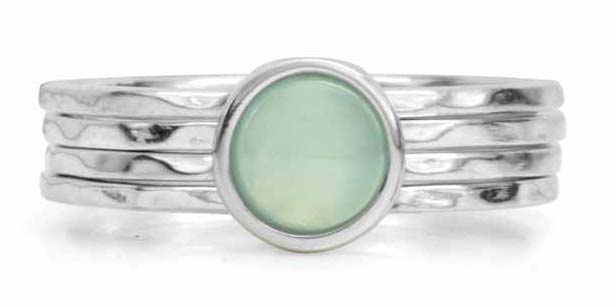 [13]
[13]“This year, retailers seemed focused on moving their collections and brands forward and looking for quality and where the trends are heading,” says Neuwirth Traurig. “They showed keen interest in finishing and detailing and a thirst for information. Many were ready to jump ahead, go outside the box, and bring in new colour combinations, stone shapes, and textured designs.”
“We’re seeing lots of people looking out for new trends,” adds Rosen. “Everyone is moving away from the same ole, same ole, and looking for new opportunities to grow their business.”
As far as specific pieces are concerned, high-end, one-of-a-kind styles were top of mind, especially items suited for everyday wear.
“We find dainty pieces are becoming more popular—our new spinning stackable collection was a big hit,” says Traimer.
But, of course, there’s always a market for splashy statement designs, too.
“Optimism is high, and the jewellery industry is celebrating with innovative, colourful luxury,” says Duvall O’Steen of Luxury Brand Group. “The big trends at the shows included statement earrings like shoulder dusters, bypass hoops, ear climbers, as well as sizable necklaces like collars and bibs. Impressive rings were also key—either stackable or large designs for greater hand coverage.”
Canadians on the strip
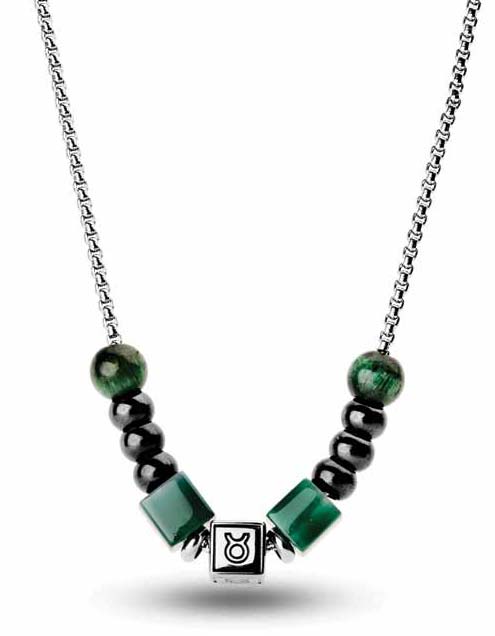 [14]
[14]For many Canadians, CJA’s cocktail reception was a highlight of the weekend. The soiree was a true ‘who’s who’ of the Canadian market and welcomed more than 100 attendees—many of whom celebrated well into the night.
“The evening was an excellent opportunity to network and an amazing social event,” says Beatrice Sturtevant, the association’s managing director. “We hope it continues to get bigger and better each year. It was great to see so many Canadian industry members share information, network, and just have a good time together.”
Looking forward
Fresh off the heels of a great show, many attendees are already anticipating next year.
“We will definitely attend next year and for many years to come,” says Benzekry. “There is potential growth and, as a retailer, we need to continuously offer new and exclusive designs to satisfy the demands of sophisticated customers.”
“Trade show exhibitions such as JCK Las Vegas have become an increasingly important part of the jewellery industry,” she adds. “Our objective for exhibiting is to reach and communicate with serious customers and potential prospects. It’s not about the total numbers, but rather who is in the crowd; the people who will potentially buy our product and their respective decision-makers who have the purchasing authority.”
Despite the excitement, JCK’s return to its former venue caused some confusion in regards to the floor plan, leaving many exhibitors hoping the kinks get worked out before next year’s shows.
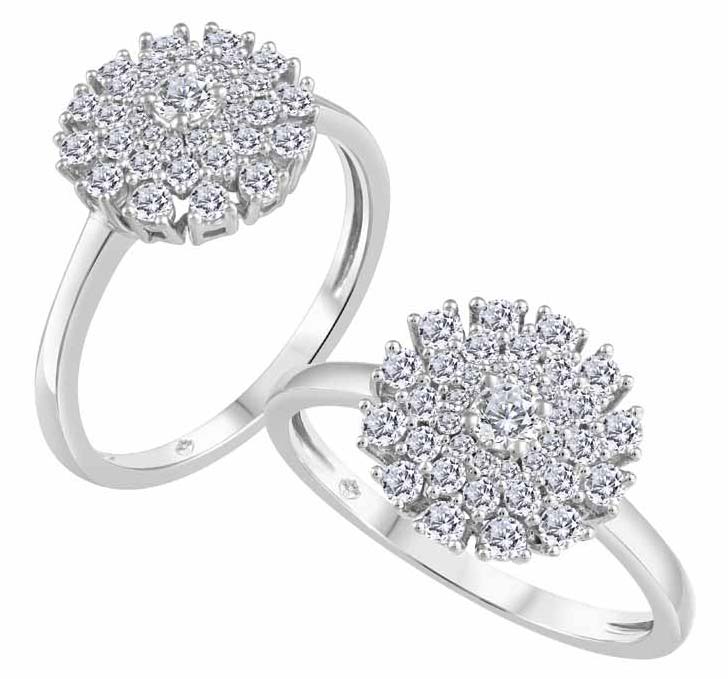 [15]
[15]“Having the show at the Sands was a great idea; however, the location of the CJA ‘booth’ was unacceptable,” says Sturtevant. “There was very little traffic, and the floor staff was unable to advise attendees of where we were located. We heard from members who couldn’t find us and, ultimately, gave up searching.”
This sense of disappointment is echoed by Wasylyshyn, who felt the repositioning of the Design Center from the front of the venue to the back left something to be desired.
“We ended up next to a service entrance and garbage containers, and backed onto two or three empty booths,” he says. “Our repeat business was phenomenal, but we didn’t meet as many new prospects as we’d hoped.”
“As much as we enjoyed the fraternity in the Design Center, we’re looking at all options in 2020,” he adds. “When they shuffled the deck with the floorplan, it turned the Design Center from a benefit to a detriment for us. I don’t think it was a coincidence we didn’t see our Design Center sales rep after the opening day of the show.”
Just how JCK may address these challenges remains to be seen, but in the meantime, the event’s overall value and draw continues to make it a ‘must attend’ for most in the industry.
“Those that have needs will be in Las Vegas,” says Dubrovsky. “The day of just coming for a look and a nice weekend are over; this is a ‘by needs’ trade show.”
- [Image]: https://www.jewellerybusiness.com/wp-content/uploads/2019/08/opener.jpg
- [Image]: https://www.jewellerybusiness.com/wp-content/uploads/2019/08/SC3283R-R1600581.jpg
- [Image]: https://www.jewellerybusiness.com/wp-content/uploads/2019/08/B049_crop.jpg
- [Image]: https://www.jewellerybusiness.com/wp-content/uploads/2019/08/Lark-Berry-Bow-Necklace-a.jpg
- [Image]: https://www.jewellerybusiness.com/wp-content/uploads/2019/08/crop_BB-137.jpg
- [Image]: https://www.jewellerybusiness.com/wp-content/uploads/2019/08/MRD-099-6W50_open_rose.jpg
- [Image]: https://www.jewellerybusiness.com/wp-content/uploads/2019/08/EF5Y7752-CCS1022A-P-S2-2461-C24.jpg
- [Image]: https://www.jewellerybusiness.com/wp-content/uploads/2019/08/FH8-1720.jpg
- [Image]: https://www.jewellerybusiness.com/wp-content/uploads/2019/08/PPX6104-WT.jpg
- [Image]: https://www.jewellerybusiness.com/wp-content/uploads/2019/08/GB1800-SL.jpg
- [Image]: https://www.jewellerybusiness.com/wp-content/uploads/2019/08/694-TMPKE-2-1.jpg
- [Image]: https://www.jewellerybusiness.com/wp-content/uploads/2019/08/974060.jpg
- [Image]: https://www.jewellerybusiness.com/wp-content/uploads/2019/08/crop_Still-MR6601.jpg
- [Image]: https://www.jewellerybusiness.com/wp-content/uploads/2019/08/BTJNS72_Taurus_crop.jpg
- [Image]: https://www.jewellerybusiness.com/wp-content/uploads/2019/08/FIJ3452_crop.jpg
- [Image]: https://www.jewellerybusiness.com/wp-content/uploads/2019/08/Ghungroo-pendant-WG.jpg
- [Image]: https://www.jewellerybusiness.com/wp-content/uploads/2019/08/SLB430.jpg
- [Image]: https://www.jewellerybusiness.com/wp-content/uploads/2019/08/AJ_Ring_Submission_JCK_2019.jpg
- [Image]: https://www.jewellerybusiness.com/wp-content/uploads/2019/08/G276-copy_crop.jpg
- [Image]: https://www.jewellerybusiness.com/wp-content/uploads/2019/08/CA0533EH-WP-1.00_1000x1000_PERS.jpg
- [Image]: https://www.jewellerybusiness.com/wp-content/uploads/2019/08/PBS8445.jpg
- [Image]: https://www.jewellerybusiness.com/wp-content/uploads/2019/08/crop_Assael_efl_AquaKeshi_F.jpg
- [Image]: https://www.jewellerybusiness.com/wp-content/uploads/2019/08/crop_DB2K00MC.jpg
Source URL: https://www.jewellerybusiness.com/features/coming-home-again-the-hottest-trends-and-talk-from-jck-las-vegas-2019/
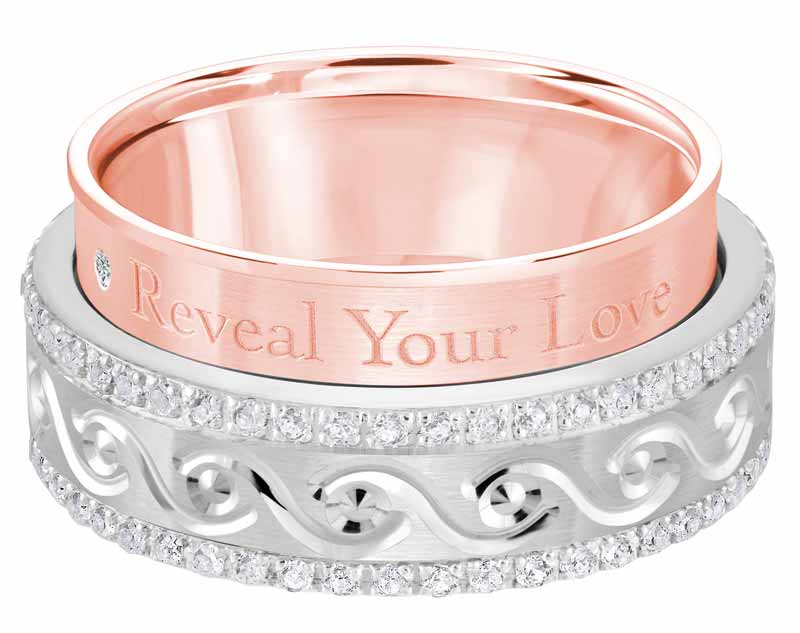 [6]
[6]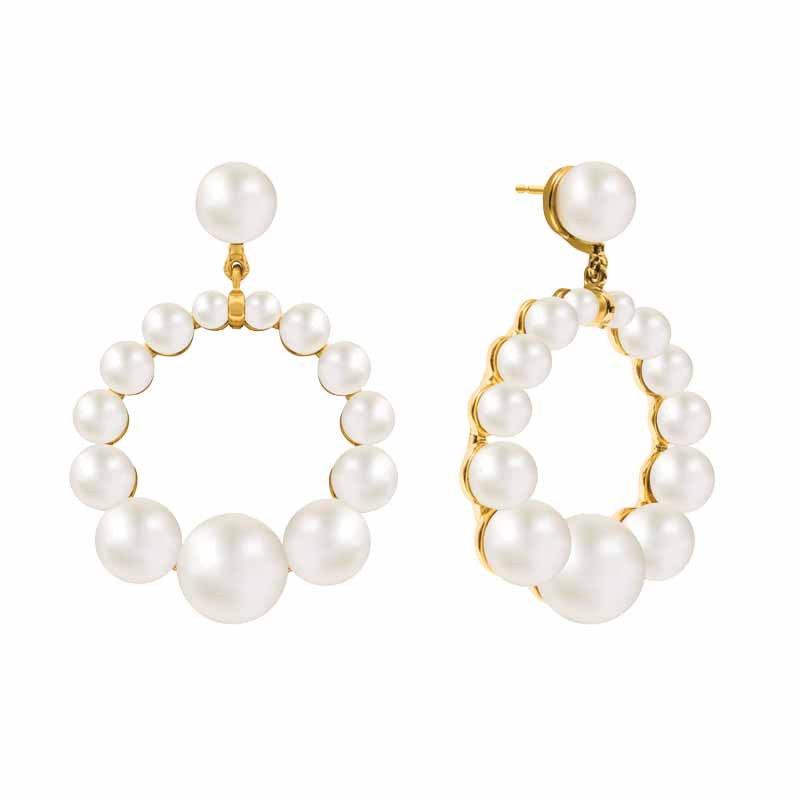 [7]
[7]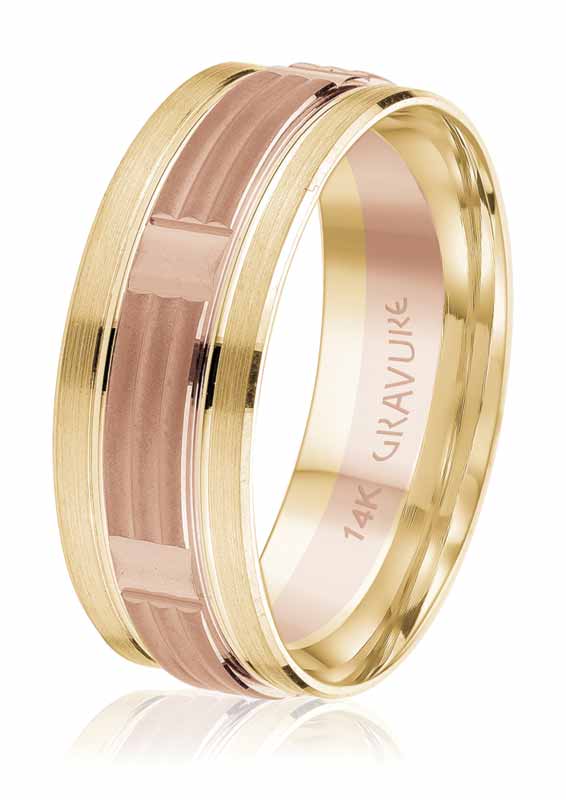 [8]
[8]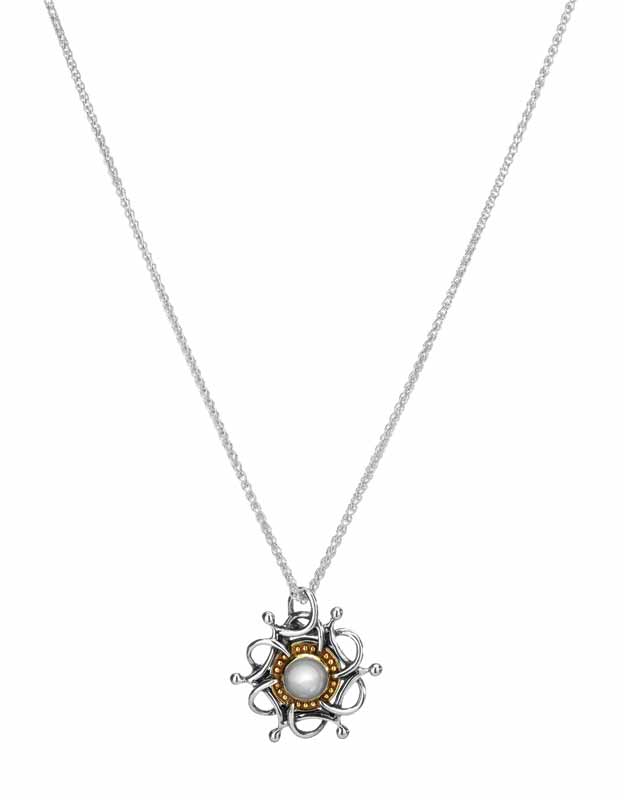 [9]
[9] [10]
[10]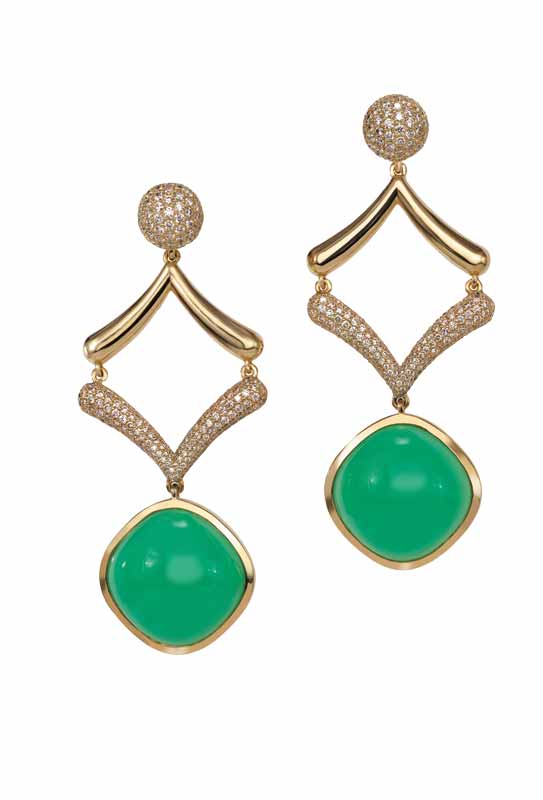 [11]
[11]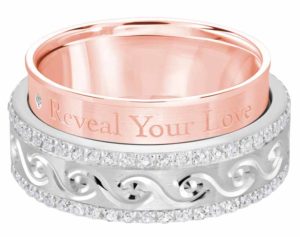

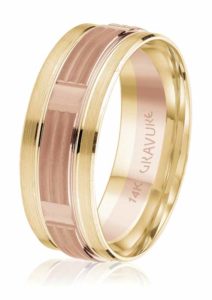
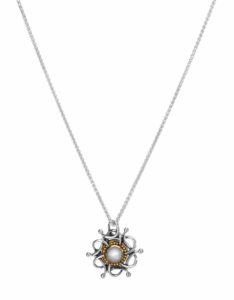


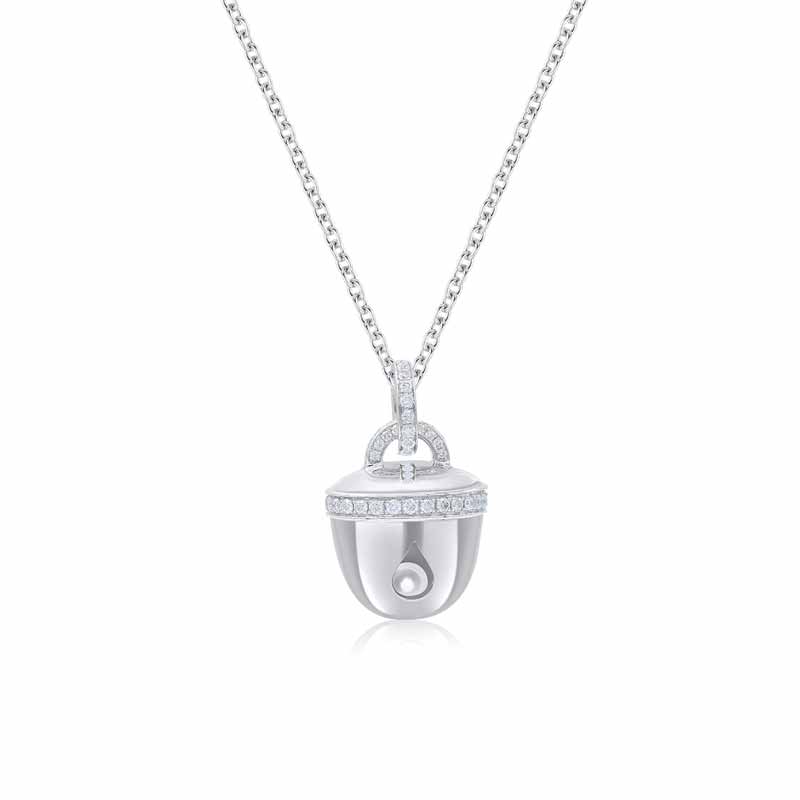 [16]
[16]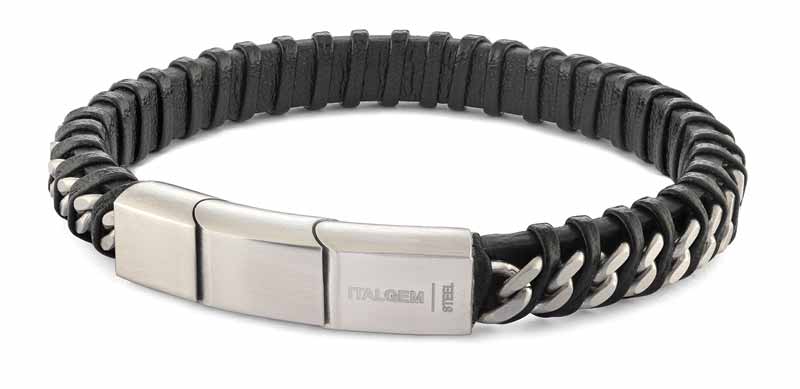 [17]
[17]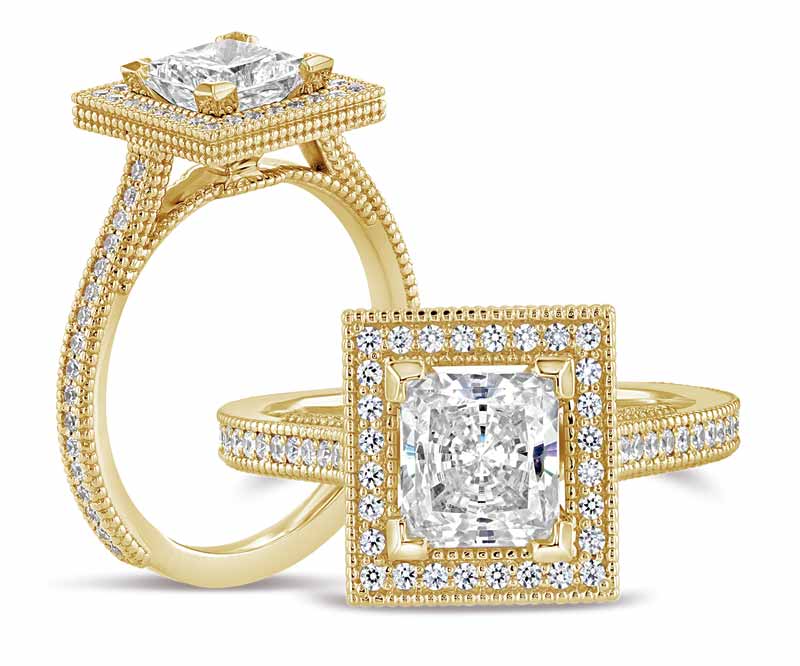 [18]
[18]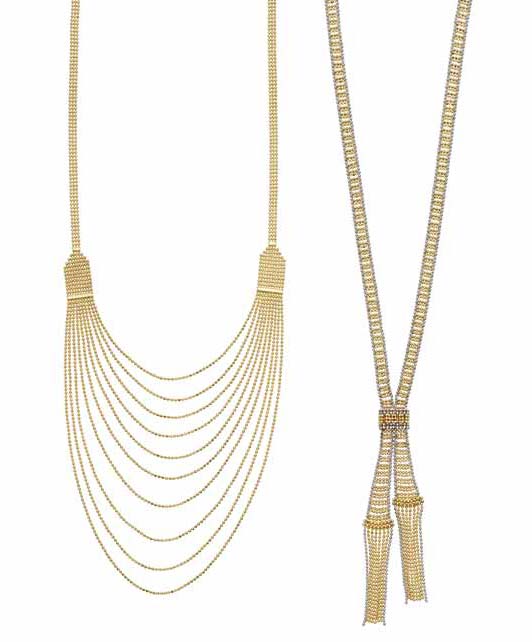 [19]
[19]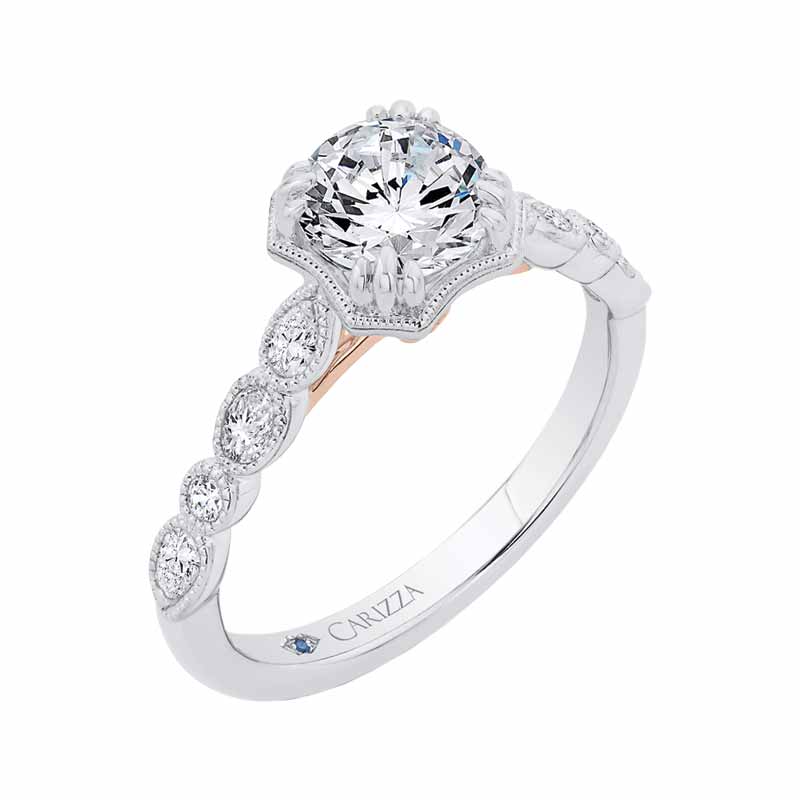 [20]
[20]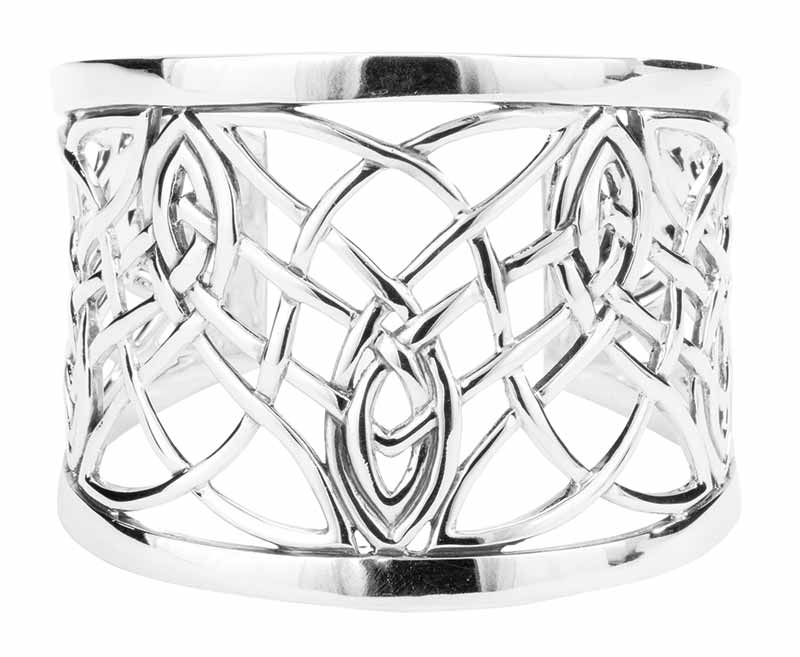 [21]
[21]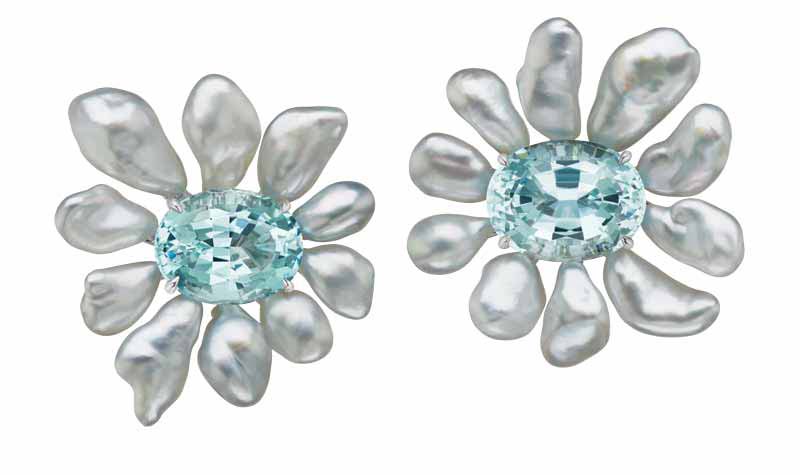 [22]
[22]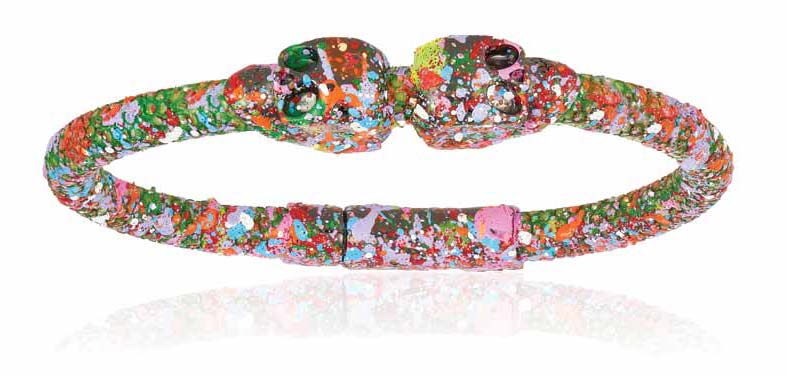 [23]
[23]